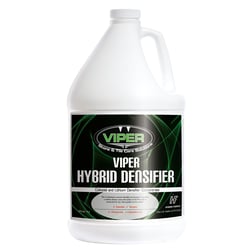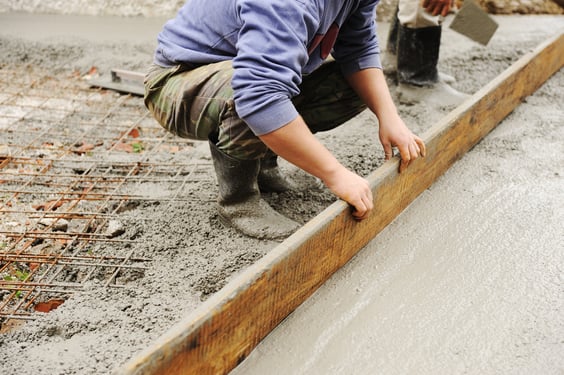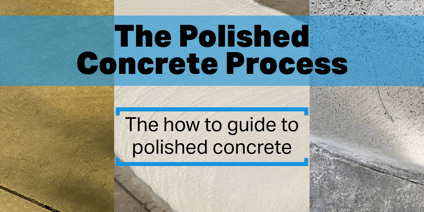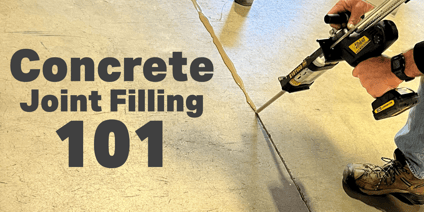One of concrete’s weaknesses is its natural absorbency of liquids. A concrete densifier makes the surface and substrate of concrete denser. The combination of a densifier, a polishing process, and a carefully selected protective treatment almost eliminates the weakness of absorption of liquids while leaving the concrete vapor permeable.
A densifier is defined as, “something that makes things more dense”. Dense is defined as, “having the component parts closely compacted together; crowded or compact.”
Keep reading to learn more about densifiers.

Densifiers create a chemical reaction that leads to better concrete performance
Free lime is a byproduct of the process of curing concrete. Hydrated lime can constitute up to 25 percent of hardened cement, but adds no strength to the concrete. A densifier is a chemical designed to react with free lime, resulting in a gel that consists of a calcium silicate hydrate.
In all densifiers, the primary reaction happens between the free lime and the silica or silicates. The gel binds to the concrete and dries hard, making the concrete more durable and dense than it was before the application of the densifier. The resulting density is the first step to increasing resistance to both oil and water-based liquids.
This resistance is seen when dyeing concrete. The densifier limits the depth of penetration of the dye and increases the dye visibility at the surface. The increased durability diminishes concrete dusting and prolongs the time it takes to show wear from human and vehicular traffic.
All of this results from a simple application of a densifier solution.
How to choose the correct densifier
There are different types of densifiers based on silicates.
Silicates traditionally need a way to be held in suspension. This is accomplished through a weak attachment with sodium, potassium, and lithium, along with colloidal silica. The silicate and silica react with the calcium, forming the hard calcium silicate. The calcium silicate does the densifying while producing other minor byproducts. The usage of a sodium silicate requires the surface to be flooded and the potassium, colloidal, and lithium silicates to be sprayed onto the surface. In this instance, a byproduct, sodium carbonate, can create a crust on the surface if not immediately rinsed after application (this crust is not an issue if the concrete is going to be immediately polished). Other densifiers do not need to be rinsed, as any byproducts would generally be minor unless the densifier is sprayed on too heavily.
The sodium silicate type densifiers are less expensive, but they require more labor. The potassium and lithium silicates along with colloidal silica are more expensive but require less labor.
Colloidal densifiers require a little more discussion because they are different than other densifiers. The advantage of colloidal densifiers is that they are smaller and find pores of the concrete that the sodium, potassium, and lithium are too big to fill. Their lower surface tension help to carry the smaller particles below the surface of the concrete and its higher proportion of silica reacts readily reacts to the free lime. A colloidal densifier works best when combined with one of the silicates so that both small and large pores are filled.
Conclusion
Remember: the use of densifiers reacts with a relevant portion of the concrete not contributing to its density and transforms the free lime into calcium silicate. This calcium silicate fills the open pores of the concrete thereby increasing both its durability and density.
"The important variable is long contact time between the chemical silicate solution and concrete surface, with a longer exposure time ensuring maximum saturation and a more complete reaction,” stated one industry veteran
1. If you are going to go through the arduous process of polishing and the expense of applying an expensive impregnating sealer, then the use of a densifier is an easy decision.
2. All concrete should have a densifier applied for approximately 28 days after curing.
3. It is important to remember that all concrete floors will vary due to different mix formulas and different regional aggregates. Expectations need to be managed as a densifier will make all concrete floors better, but its application cannot make up for an inferior concrete mix.
Like what you read? Subscribe to our blog for free.
Featured Products

Hydro-Force, Viper Hybrid Densifier, 1 Gallon
Enjoyed reading this post? Read the following articles:





